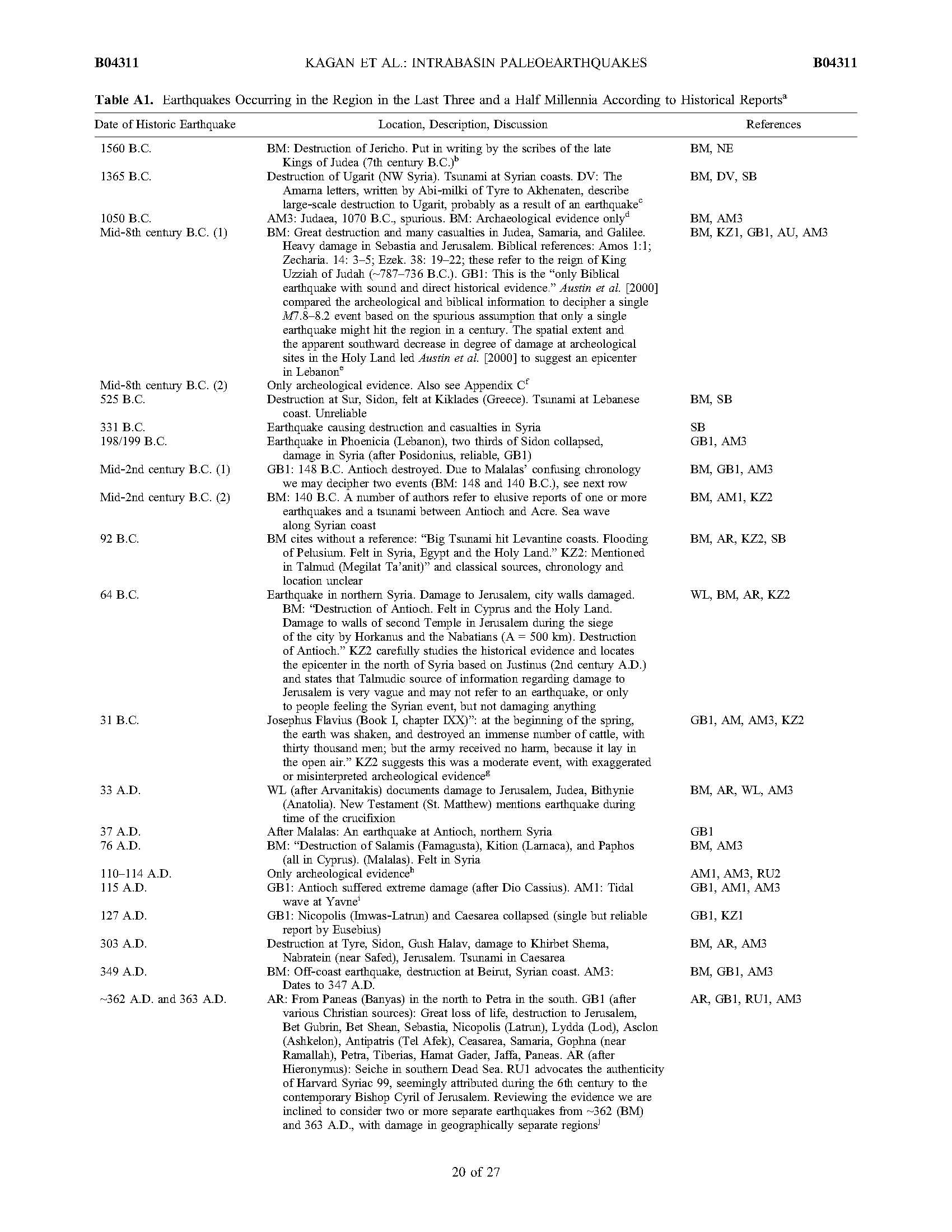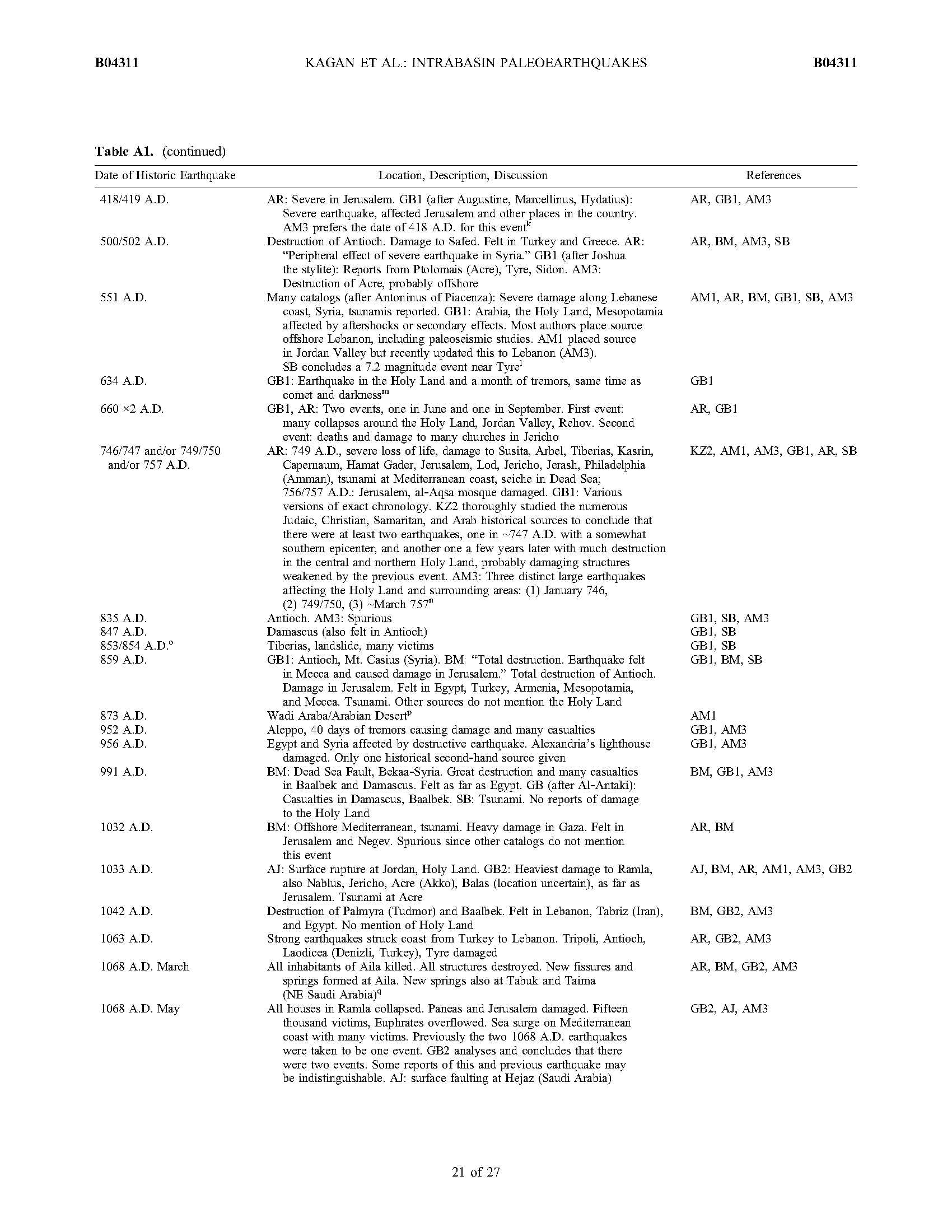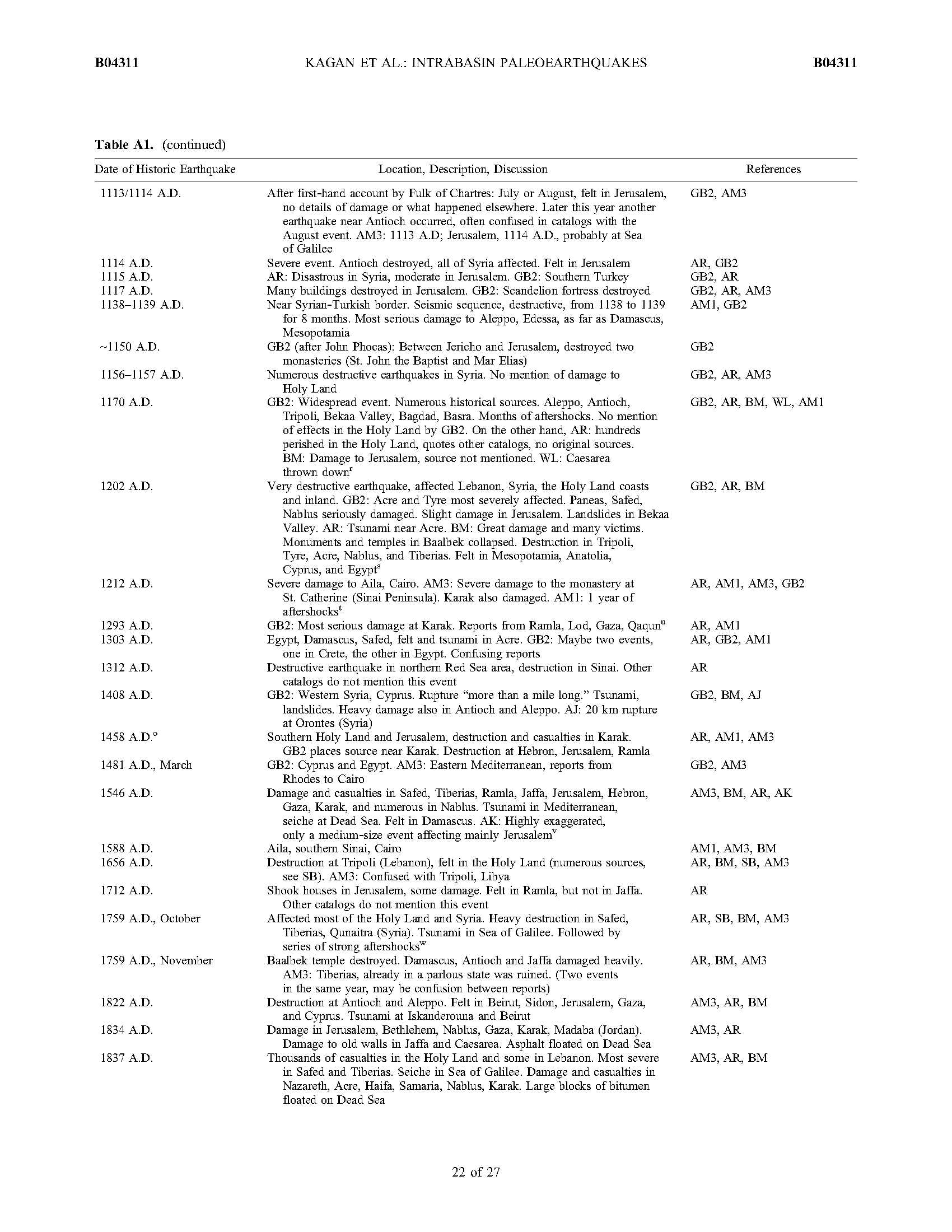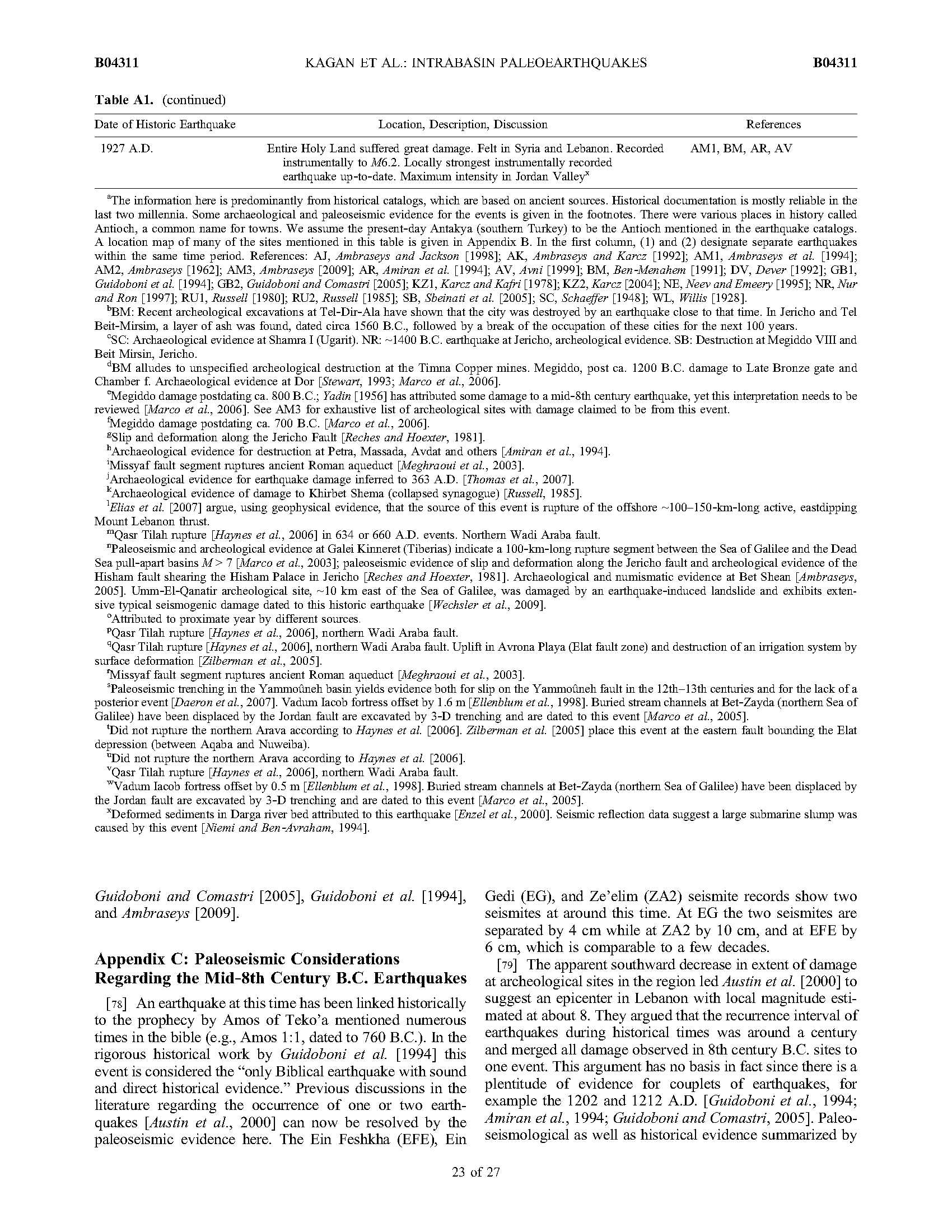Appendix C: Paleoseismic Considerations Regarding the Mid 8th Century B.C. Earthquakes
[78] An earthquake at this time has been linked historically
to the prophecy by Amos of Tekoa mentioned numerous
times in the bible (e.g., Amos 1:1, dated to 760 B.C.). In the
rigorous historical work by Guidoboni et al. [1994] this
event is considered the only Biblical earthquake with sound
and direct historical evidence. Previous discussions in the
literature regarding the occurrence of one or two earthquakes
[Austin et al., 2000] can now be resolved by the
paleoseismic evidence here. The Ein Feshkha (EFE), Ein
Gedi (EG), and Zeelim (ZA2) seismite records show two
seismites at around this time. At EG the two seismites are
separated by 4 cm while at ZA2 by 10 cm, and at EFE by
6 cm, which is comparable to a few decades.
[79] The apparent southward decrease in extent of damage
at archeological sites in the region led Austin et al. [2000] to
suggest an epicenter in Lebanon with local magnitude estimated
at about 8. They argued that the recurrence interval of
earthquakes during historical times was around a century
and merged all damage observed in 8th century B.C. sites to
one event. This argument has no basis in fact since there is a
plentitude of evidence for couplets of earthquakes, for
example the 1202 and 1212 A.D. [Guidoboni et al., 1994;
Amiran et al., 1994; Guidoboni and Comastri, 2005].
Paleoseismological as well as historical evidence summarized
by Agnon et al. [2006, Figure 13] points to recurrence intervals
of [50ÃD] 73 years for the period of 1000ÃD=1800 A.D. Archaeological
evidence of events is abundant throughout the area
(see map of Austin et al. [2000, Figure 1]). Additional
support of two events includes studies at Megiddo archeological
site [Marco et al., 2006] also show two deformation
events, one postdating 800 B.C. and the other postdating
700 B.C. The archeological dating of the strongest evidence
for shaking has a resolution of approximately 100 years, so
it could correlate with the Dead Sea seismites. Paleoseismic
trenches at the Tel Rehov archeological site near Bet Shean
revealed a fault scarp created by two seismic events, one in
the 7th and 6th century B.C. [Zilberman et al., 2004]. Our
results, in addition to those of other paleoseismological and
archaeological studies, support two earthquakes during the
mid8th century B.C.



